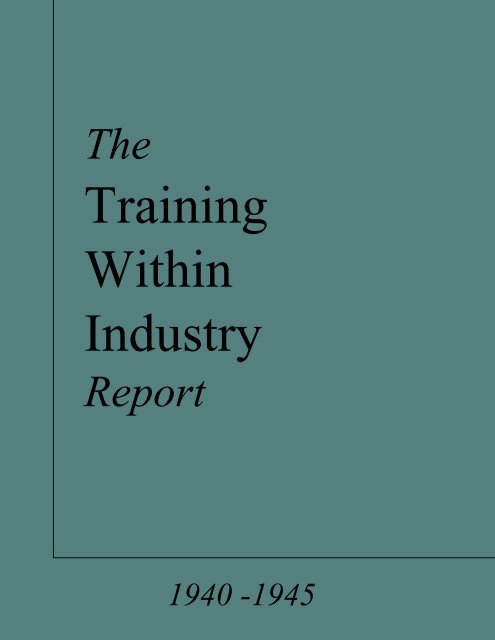Archive for the ‘How To’ Category
What It Takes
 Speak up. Your ideas can’t see daylight unless others know about them.
Speak up. Your ideas can’t see daylight unless others know about them.
Be wrong. When you’re wrong, you sharpen the rightness.
Be right. When you’re right in the face of wrongness, everyone wins, except for you.
Stand tall. Stand behind your decisions, but you can’t be responsible for their outcome.
Be truthful, but not hurtful.
Be overwhelmed. This is difficult.
Give it away. When things go well, delegate credit to the up-and-coming. They’ll remember.
Support others. When someone’s in the bucket, pull them out. They’ll remember.
Pay it forward. A kind soul gave it to you, and it’s time to give it to someone else. They’ll remember.
Say “thank you.” And mean it.
Be quiet. When things are on the right track, there’s no need to derail.
Take the heat. When there’s a mistake, own it so the young don’t have to. They’ll remember.
Make room for others. Nothing blocks their growth like your career aspirations.
Say nothing negative, unless you can’t. And if you must, say it in private.
Praise publicly, loudly, and often.
Set up others for success. And when accused of doing so, plead ignorance.
Share your frustrations, but sparingly. Done skillfully, it’s a compliment.
Be human. People will notice.
“Uncomfortable Fisher” by DaveFayram is licensed under CC BY-SA 2.0
If you “don’t know,” you’re doing it right.
 If you know how to do it, it’s because you’ve done it before. You may feel comfortable with your knowledge, but you shouldn’t. You should feel deeply uncomfortable with your comfort. You’re not trying hard enough, and your learning rate is zero.
If you know how to do it, it’s because you’ve done it before. You may feel comfortable with your knowledge, but you shouldn’t. You should feel deeply uncomfortable with your comfort. You’re not trying hard enough, and your learning rate is zero.
Seek out “don’t know.”
If you don’t know how to do it, acknowledge you don’t know, and then go figure it out. Be afraid, but go figure it out. You’ll make mistakes, but without mistakes, there can be no learning.
No mistakes, no learning. That’s a rule.
If you’re getting pressure to do what you did last time because you’re good at it, well, you’re your own worst enemy. There may be good profits from a repeat performance, but there is no personal growth.
Why not find someone with “don’t know” mind and teach them?
Find someone worthy of your time and attention and teach them how. The company gets the profits, an important person gets a new skill, and you get the satisfaction of helping someone grow.
No learning, no growth. That’s a rule.
No teaching, no learning. That’s a rule, too.
If you know what to do, it’s because you have a static mindset. The world has changed, but you haven’t. You’re walking an old cowpath. It’s time to try something new.
Seek out “don’t know” mind.
If you don’t know what to do, it’s because you recognize that the old way won’t cut it. You know have a forcing function to follow. Follow your fear.
No fear, no growth. That’s a rule.
Embrace the “don’t know” mind. It will help you find and follow your fear. And don’t shun your fear because it’s a leading indicator of novelty, learning, and growth.
“O OUTRO LADO DO MEDO É A LIBERDADE (The Other Side of the Fear is the Freedom)” by jonycunha is licensed under CC BY-SA 2.0
Some Problems With Problems
 If you don’t know what the problem is, that’s your first problem.
If you don’t know what the problem is, that’s your first problem.
A problem can’t be a problem unless there’s a solution. If there’s no possible solution, don’t try to solve it, because it’s not a problem.
If there’s no problem, you have a big problem.
If you’re trying to solve a problem, but the solution is outside your sphere of influence, you’re taking on someone else’s problem.
If someone tries to give you a gift but you don’t accept it, it’s still theirs. It’s like that with problems.
If you want someone to do the right thing, create a problem for them that, when solved, the right thing gets done.
Problems are good motivators and bad caretakers.
A problem is between two things, e.g., a hammer and your thumb. Your job is to figure out the right two things.
When someone tries to give you their problem, keep your hands in your pockets.
A problem can be solved before it happens, while it happens, or after it happened. Each time domain has different solutions, different costs, and different consequences. Your job is to choose the most appropriate time domain.
If you have three problems, solve one at a time until you’re done.
Solving someone else’s problem is a worst practice.
If you solve the wrong problem, you consume all the resources needed to solve the right problem without any of the benefits of solving it.
Ready, fire, aim is no way to solve problems.
When it comes to problems, defining IS solving.
If you learn one element of problem-solving, learn to see when someone is trying to give you their problem.
“My first solved Rubik’s cube” by Nina Stawski is licensed under CC BY 2.0
What Good Coaches Do
 Good coaches listen to you. They don’t judge, they just listen.
Good coaches listen to you. They don’t judge, they just listen.
Good coaches continually study the game. They do it in private, but they study.
Good coaches tell you that you can do better, and that, too, they do in private.
Good coaches pick you up off the floor. They know that getting knocked over is part of the game.
Good coaches never scream at you, but they will cry with you.
Good coaches never stop being your coach. Never.
Good coaches learn from you, and the best ones tell you when that happens.
Good coaches don’t compromise. Ever.
Good coaches have played the game and have made mistakes. That’s why they’re good coaches.
Good coaches do what’s in your best interest, not theirs.
Good coaches are sometimes wrong, and the best ones tell you when that happens.
Good coaches don’t care what other people think of them, but they care deeply about you.
Good coaches are prepared to be misunderstood, though it’s not their preference.
Good coaches let you bump your head or smash your knee, but, otherwise, they keep you safe.
Good coaches earn your trust.
Good coaches always believe you and perfectly comfortable disagreeing with you at the same time.
Good coaches know it’s always your choice, and they know that’s how deep learning happens.
Good coaches stick with you, unless you don’t do your part.
Good coaches don’t want credit. They want you to grow.
Good coaches don’t have a script. They create a custom training plan based on your needs.
Good coaches simplify things when it’s time, unless it’s time to make things complicated.
Good coaches aren’t always positive, but they are always truthful.
Good coaches are generous with their time.
Good coaches make a difference.
How To See What’s Missing
 With one eye open and the other closed, you have no depth perception. With two eyes open, you see in three dimensions. This ability to see in three dimensions is possible because each eye sees from a unique perspective. The brain knits together the two unique perspectives so you can see the world as it is. Or, as your brain thinks it is, at least.
With one eye open and the other closed, you have no depth perception. With two eyes open, you see in three dimensions. This ability to see in three dimensions is possible because each eye sees from a unique perspective. The brain knits together the two unique perspectives so you can see the world as it is. Or, as your brain thinks it is, at least.
And the same can be said for an organization. When everyone sees things from a single perspective, the organization has no depth perception. But with at least two perspectives, the organization can better see things as they are. The problem is we’re not taught to see from unique perspectives.
With most presentations, the material is delivered from a single perspective with the intention of helping everyone see from that singular perspective. Because there’s no depth to the presentation, it looks the same whether you look at it with one eye or two. But with some training, you can learn how to see depth even when it has purposely been scraped away.
And it’s the same with reports, proposals, and plans. They are usually written from a single perspective with the objective of helping everyone reach a single conclusion. But with some practice, you can learn to see what’s missing to better see things as they are.
When you see what’s missing, you see things in stereo vision.
Here are some tips to help you see what’s missing. Try them out next time you watch a presentation or read a report, proposal, or plan.
When you see a WHAT, look for the missing WHY on the top and HOW on the bottom. Often, at least one slice of bread is missing from the why-what-how sandwich.
When you see a HOW, look for the missing WHO and WHEN. Usually, the bread or meat is missing from the how-who-when sandwich.
Here’s a rule to live by: Without finishing there can be no starting.
When you see a long list of new projects, tasks, or initiatives that will start next year, look for the missing list of activities that would have to stop in order for the new ones to start.
When you see lots of starting, you’ll see a lot of missing finishing.
When you see a proposal to demonstrate something for the first time or an initial pilot, look for the missing resources for the “then what” work. After the prototype is successful, then what? After the pilot is successful, then what? Look for the missing “then what” resources needed to scale the work. It won’t be there.
When you see a plan that requires new capabilities, look for the missing training plan that must be completed before the new work can be done well. And look for the missing budget that won’t be used to pay for the training plan that won’t happen.
When you see an increased output from a system, look for the missing investment needed to make it happen, the missing lead time to get approval for the missing investment, and the missing lead time to put things in place in time to achieve the increased output that won’t be realized.
When you see a completion date, look for the missing breakdown of the work content that wasn’t used to arbitrarily set the completion date that won’t be met.
When you see a cost reduction goal, look for the missing resources that won’t be freed up from other projects to do the cost reduction work that won’t get done.
It’s difficult to see what’s missing. I hope you find these tips helpful.
“missing pieces” by LeaESQUE is licensed under CC BY-ND 2.0
How To Grow Leaders
 If you want to grow leaders, meet with them daily.
If you want to grow leaders, meet with them daily.
If you want to grow leaders, demand that they disagree with you.
If you want to grow leaders, help them with all facets of their lives.
If you want to grow leaders, there is no failure, there is only learning.
If you want to grow leaders, give them the best work.
If you want to grow leaders, protect them.
If you want to grow leaders, spend at least two years with them.
If you want to grow leaders, push them.
If you want to grow leaders, praise them.
If you want to grow leaders, get them comfortable with discomfort.
If you want to grow leaders, show them who you are.
If you want to grow leaders, demand that they use their judgment.
If you want to grow leaders, give them just a bit more than they can handle and help them handle it.
If you want to grow leaders, show emotion.
If you want to grow leaders, tell them the truth, even when it creates anxiety.
If you want to grow leaders, always be there for them.
If you want to grow leaders, pull a hamstring and make them present in your place.
If you want to grow leaders, be willing to compromise your career so their careers can blossom.
If you want to grow leaders, when you are on vacation tell everyone they are in charge.
If you want to grow leaders, let them chose between to two good options.
If you want to grow leaders, pay attention to them.
If you want to grow leaders, be consistent.
If you want to grow leaders, help them with their anxiety.
If you want to grow leaders, trust them.
If you want to grow leaders, demonstrate leadership.
“Mother duck and ducklings” by Tambako the Jaguar is licensed under CC BY-ND 2.0
When You Have Disagreement
 When you have nothing to say, don’t say it.
When you have nothing to say, don’t say it.
But, when you have something to say, you must say it.
When you think your response might be taken the wrong way, it will.
When you take care to respond effectively, your response might be taken the wrong way.
When you have disagreement, there’s objective evidence that at least two people are thinking for themselves.
When you have disagreement, confrontation is optional.
When you have disagreement, everyone can be right, even if just a little.
When you have disagreement, that says nothing about the people doing the disagreeing.
When you have disagreement at high decibels, that’s an argument.
When you have disagreement, disagreeing on all points is a choice.
When you have disagreement, if you listen to sharpen your response, it’s a death spiral.
When you have disagreement, it’s best to disagree wholeheartedly and respectfully.
When you have disagreement, if you listen to understand, there’s hope.
When you have disagreement, it’s a disagreement about ideas and not moral character.
When you have disagreement, intentions matter.
When you have disagreement, decision quality skyrockets.
When you have disagreement, thank your partner in crime for sharing their truth.
When you have disagreement, there is sufficient trust to support the disagreement.
When you have disagreement, sometimes you don’t, but you don’t know it.
When you have disagreement, converging on a single point of view is not the objective.
When you have disagreement about ethics, you may be working at the wrong company.
When you have disagreement, there are no sides, only people doing their best.
When you have disagreement, the objective is understanding.
When you have disagreement, it’s the right thing to have.
When you have disagreement, there may be disagreement on the topic of the disagreement.
When you have disagreement, you are a contributing member, even if you stay quiet.
When you have disagreement, why not be agreeable?
When you have disagreement, it’s okay to change your mind.
When you have disagreement, you may learn something about yourself.
“Day 7: I disagree” by Stupid Dingo is licensed under CC BY 2.0
What do you want?
 If you want a promotion, do the right thing.
If you want a promotion, do the right thing.
If you do the right thing, be prepared to be misunderstood.
If you want the credit, you don’t want the best outcome for all.
If you want to have focus, spend time outside.
If you want to have more control, give it away.
If you want to be happy, want what you have.
If you want to be praised, ask yourself why.
If you want to have focus, get your sleep.
If you want fame, once you get it you probably won’t.
If you want more influence, spend the next decade helping others.
If you want to make progress, demonstrate a healthy disrespect for the Status Quo.
If you want to make a difference, say thank you.
If you want to do what you love, maybe you should consider loving what you do.
If you want to have focus, get your exercise.
If you want to feel better about yourself, help someone who has a problem.
If you want to be more productive, it’s better to be more effective.
If you want to make change, point to the biggest problems and solve them.
If you want to be right, don’t.
If you want loyalty, take responsibility for the bad stuff.
If you want to be successful, same some of your energy for your family.
If you want to make progress, start where you are.
If you want to be happy, you have to decide that what you have is enough.
If you want to preserve your legacy, develop young talent.
If you want respect, be kind.
If you want to be understood, you may not do what’s right.
If you want to do better work, work fewer hours.
If you want to work on great projects, say no to good ones.
“That is the Question” by cogdogblog is licensed under CC BY 2.0
How will you allocate your time differently?
I don’t like resolutions, but I do like looking back to assess how spent my time differently over the previous year. Below is a short exercise that could help you get ready for 2021.
Below are some questions intended to help you assess how you spent your time differently in 2020. Take fifteen seconds, or so, to think through each one.
Did you spend more time with your family or less?
Did you spend more time helping yourself or others?
Instead of commuting, what did you do with your time?
Did you work more hours or fewer?
Did you spend more time on your mental/spiritual health or less?
Did you take more vacation days or fewer?
Instead of eating out, what did you do with that time?
Did you exercise more or less?
What did you do with your time freed by reduced business travel do more?
Did you participate in more meetings or fewer?
Did you sleep more or less?
Grab a pen and paper (or print out the text below) and let’s go through the rest of the exercise.
What are the top three questions that caused the strongest emotional response? (Write them down.) For those three questions, think through three scenarios: A) 2021 is just like 2020. B) 2021 amplifies the changes you experienced in 2020. C) 2021 is just like 2019.
For each scenario, write down how you’d allocate your time differently in 2021.
The question that caused the strongest emotional response:
_________________________________________________________________________
With regard to the question above, how would you allocate your time differently in 2021?
Scenario A (same as 2020) ____________________________________________________
Scenario B (amplified changes) _________________________________________________
Scenario C (same as 2019) ____________________________________________________
The question that caused the second strongest emotional response:
________________________________________________________________________
With regard to the question above, how would you allocate your time differently in 2021?
Scenario A (same as 2020) ___________________________________________________
Scenario B (amplified changes) ________________________________________________
Scenario C (same as 2019) ____________________________________________________
The question that caused the third strongest emotional response:
________________________________________________________________________
With regard to the question above, how would you allocate your time differently in 2021?
Scenario A (same as 2020) __________________________________________________
Scenario B (amplified changes) _______________________________________________
Scenario C (same as 2019) ___________________________________________________
My list of questions likely missed important questions for you. You may want to go back and ask yourself other questions and see if your emotional response is strong enough to displace the top three you identified above.
This little exercise doesn’t generate resolutions, nor will it tell you how to allocate your time in 2021. But, I hope it helps you more skillfully navigate the uncertainty that 2021 is certain to bring.
Happy New Year. And thanks for reading.
“Sundial” by Nigel_Brown is licensed under CC BY 2.0
The Foundation of Leadership Development — Work Products
 Leadership development is a good idea in principle, but not in practice. Assessing a person against a list of seven standard competencies does not a leadership development plan make. Nor does a Meyers-Briggs assessment or a strengths assessment. The best way I know to describe the essence of leadership development is through a series of questions to assess and hire new leaders.
Leadership development is a good idea in principle, but not in practice. Assessing a person against a list of seven standard competencies does not a leadership development plan make. Nor does a Meyers-Briggs assessment or a strengths assessment. The best way I know to describe the essence of leadership development is through a series of questions to assess and hire new leaders.
Here’s the first question: Is this person capable of doing the work required for this leadership position? If you don’t start here, choose the person you like most and promote (or hire) them into the new leadership position. It’s much faster, and at least you’ll get along with them as the wheels fall off.
Next question: In this leadership position, what work products must the leader create (or facilitate the creation of)? Work products are objective evidence that the work has been completed. Examples of work products: analyses, reports, marketing briefs, spreadsheets, strategic plans, product launches, test results for new technologies. Here’s a rule: If you can’t define the required work products, you can’t define the work needed to create them. Here’s another rule: If you can’t define the work, you can’t assess a candidate’s ability to do that work. And if you can’t assess a candidate’s ability to the work, you might as well make it a popularity contest and hire the person who makes the interview committee smile.
Next question: Can the candidate show work products they’ve created that fit with those required for the leadership position? To be clear, if the candidate can show examples of all the flavors of work products required for the position, it’s a lateral move for the candidate. That’s not a bad thing, as there are good reasons candidates seek lateral positions (e.g., geographic move due to family or broadening of experience – new product line or customer segment). And if they’ve demonstrated all the work products, but the scope and/or scale are larger, the new position, the new position is a promotion for the candidate. Here’s a rule: if the candidate can’t show you an example of a specific work product or draw a picture of one on the whiteboard, they’ve never done it before. And another rule: when it comes to work products, if the candidate talks about a work product but can’t show you, it’s because they’ve never created one like that. And talking about work products in the future tense means they’ve never done it. When it comes to work products, there’s no partial credit.
Next question: For the work products the candidate has shown us, are they relevant? A candidate won’t be able to show you work products that are a 100% overlap with those required by the leadership position. The context will be different, the market will be different, and the players will be different. But, a 50-70% overlap should be good enough.
Next question: For the relevant work products the candidate has shown us, do they represent more than half of those required? If yes, go to the next question.
Next question: For the work products the candidate has not demonstrated, has the team done them? If the team has done a majority of them, that’s good. Go to the next question.
Next question: For the work products the candidate or team has not demonstrated, can we partner them with an expert (an internal one, I hope) who has? If yes, hire the candidate.
Leadership development starts with the definition of the new work the leader must be able to do in their next position. And the best way I know to define the work is to compile a collection of work products that must be created in the next position and match that against the collection of work products the leader has created. The difference between the required work products and the ones the leader has demonstrated defines the leadership development plan.
To define the leadership development plan, start with the work products.
And to help the leader develop, think apprenticeship. And for that, see this seminal report from 1945.
Regardless of the question, trust is the answer.
 If you want to make a difference, build trust.
If you want to make a difference, build trust.
If you want to build trust, do a project together.
If you want to build more trust, help the team do work they think is impossible.
If you want to build more trust, contribute to the project in the background.
If you want to build more trust, actively give credit to others.
If you want to build more trust, deny your involvement.
If you want to create change, build trust.
If you want to build trust, be patient.
If you want to build more trust, be more patient.
If you want to build more trust, check your ego at the door so you can be even more patient.
If you want to have influence, build trust.
If you want to build trust, do something for others.
If you want to build more trust, do something for others that keeps them out of trouble.
If you want to build more trust, do something for others that comes at your expense.
If you want to build more trust, do it all behind the scenes.
If you want to build more trust, plead ignorance.
If you want the next project to be successful, build trust.
If you want to build trust, deliver what you promise.
If you want to build more trust, deliver more than you promise.
If you want to build more trust, deliver more than you promise and give the credit to others.
If you want deep friendships, build trust.
If you want to build trust, give reinforcing feedback.
If you want to build more trust, give reinforcing and correcting feedback in equal amounts.
If you want to build trust, give reinforcing feedback in public and correcting feedback in private.
If you want your work to have meaning, build trust.
“[1823] Netted Pug (Eupithecia venosata)” by Bennyboymothman is licensed under CC BY 2.0

 Mike Shipulski
Mike Shipulski